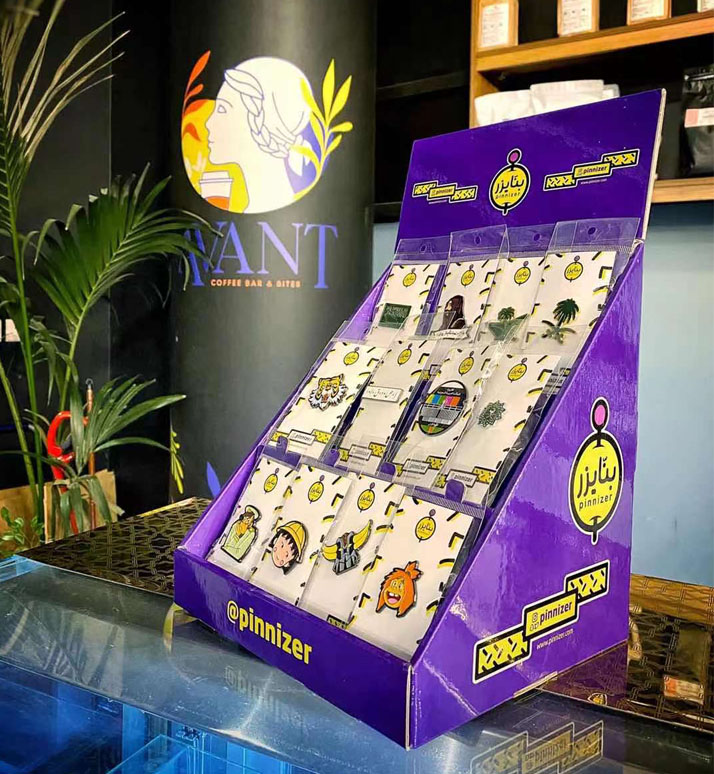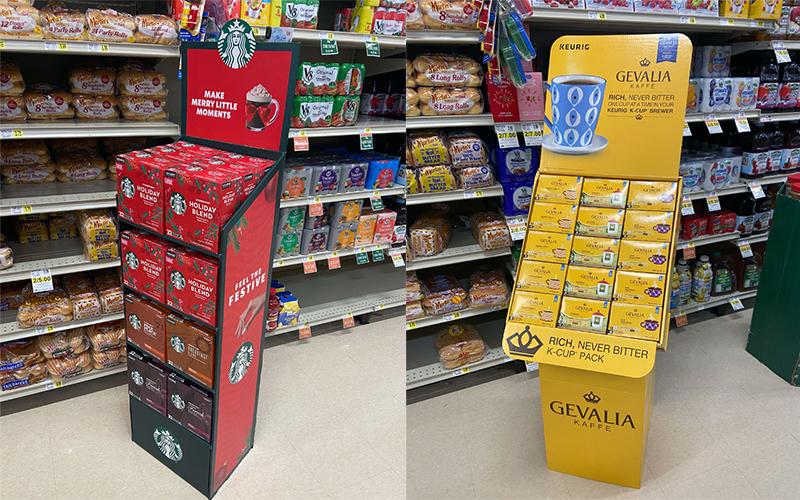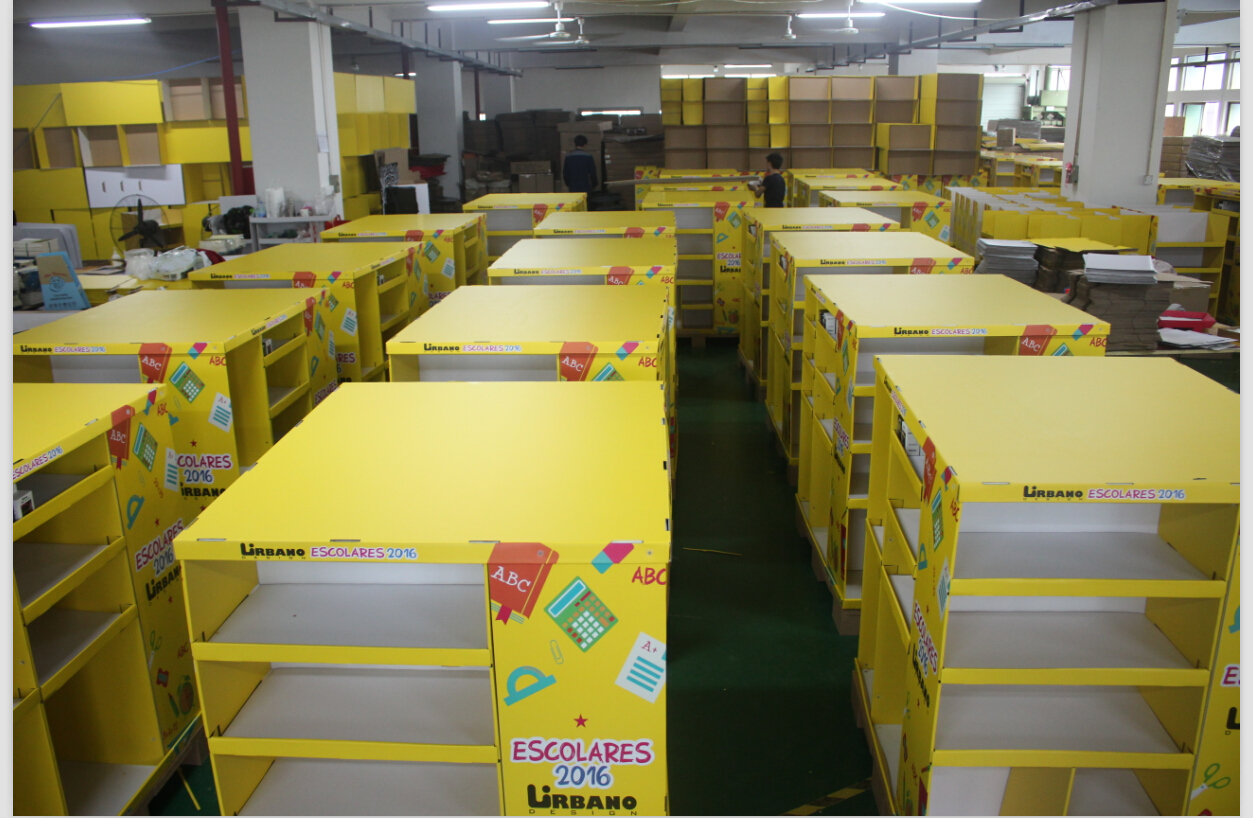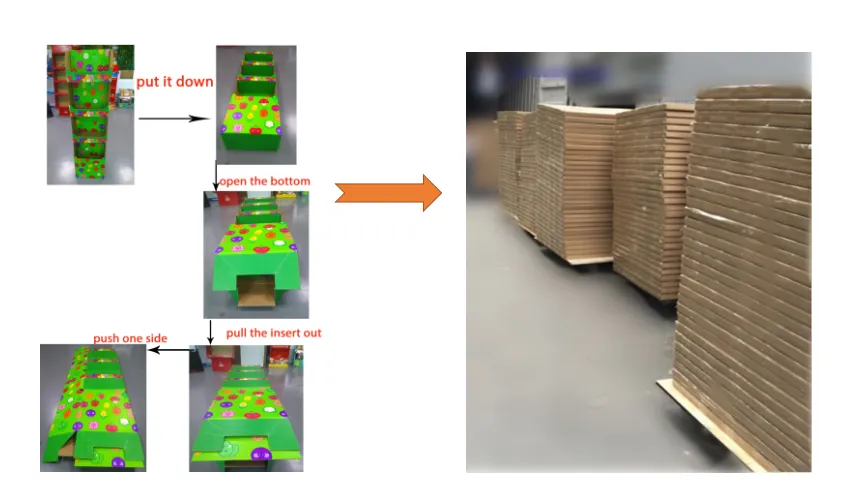Struggling to make your product pop in a crowded store? The wrong display gets ignored, wasting your marketing budget. Understanding the right display types ensures your product gets seen.
The best cardboard floor displays are those that match your product's weight, your campaign's goals, and the retail environment. Key types include versatile Free Standing Display Units (FSDUs), high-volume pallet displays for bulk items, and easy-to-shop dump bins for promotional or small products.

This gives you a starting point, but the world of retail displays1 has its own language. Over my 16 years in this business, I've found that speaking the same language as your designer and printer is the first step to success. So before we pick the perfect display for you, let's get the basics down. It will help you communicate your vision clearly and get the results you want.
What are cardboard displays called?
Ever felt lost in translation talking to a supplier about displays? Using the wrong term can lead to confusion and getting a display that doesn't fit your needs.
Cardboard displays are most commonly called Point of Purchase (POP)2 or Point of Sale (POS)3 displays. More specific names describe their form, like FSDU (Free Standing Display Unit), dump bin, counter display unit (CDU)4, or pallet display. These terms clarify their placement and function.
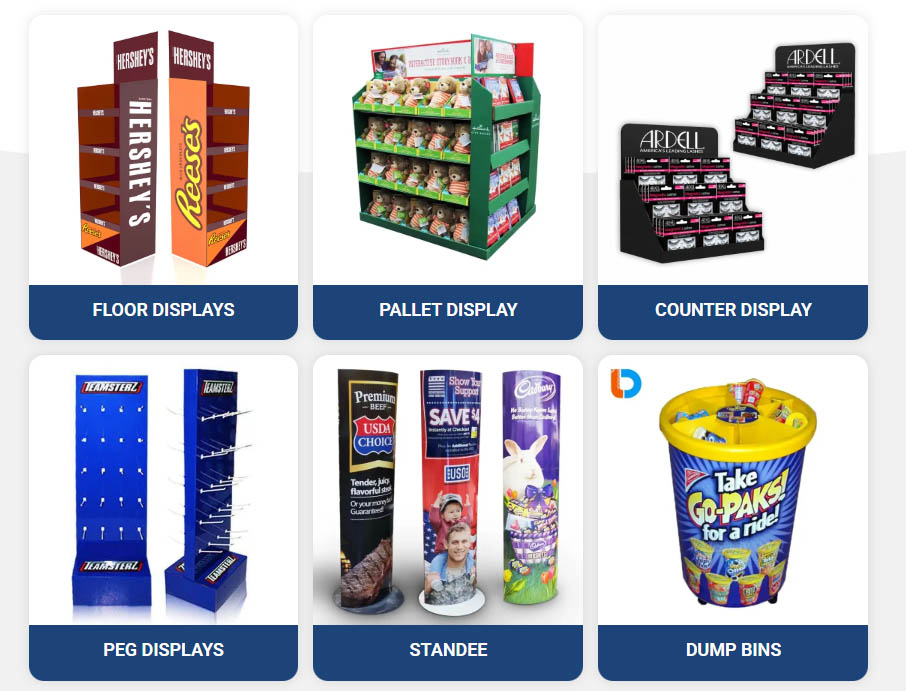
In my experience, people often use these terms interchangeably, but for a designer like Peter or a brand manager, knowing the difference is crucial. It helps in having precise conversations about design and production. Let's break down the most common jargon I hear every day.
Breaking Down the Jargon
Understanding these terms saves a lot of time and potential mistakes. When a client asks me for a "POP display," I know they mean a display designed to influence a buying decision anywhere in the store. If they say "POS display," they might be thinking specifically about the checkout area. The most useful term is often the most specific one.
Here’s a simple table to help you keep them straight:
| Term | Full Name | What It Really Means |
|---|---|---|
| POP | Point of Purchase | Any display placed where customers make buying decisions, like in an aisle. |
| POS | Point of Sale | Displays located where the final transaction happens, like the checkout counter. |
| FSDU | Free Standing Display Unit | A standalone display that isn't part of the store's regular shelving. |
Knowing these helps you articulate exactly what you need. When you can say, "I need an FSDU for the main aisle," instead of just "a cardboard stand," the project starts off on the right foot.
What are the displays in stores called?
You walk into a store and see products everywhere, on all kinds of fixtures. Calling everything a "shelf" doesn't help you plan your marketing or design an effective display.
Displays in stores are collectively known as retail displays1 or visual merchandising5. This broad category includes permanent fixtures6 like shelving and gondolas7, alongside temporary cardboard promotions like floor displays, counter units, end caps, and pallet displays8. Their names often describe their location or structure.
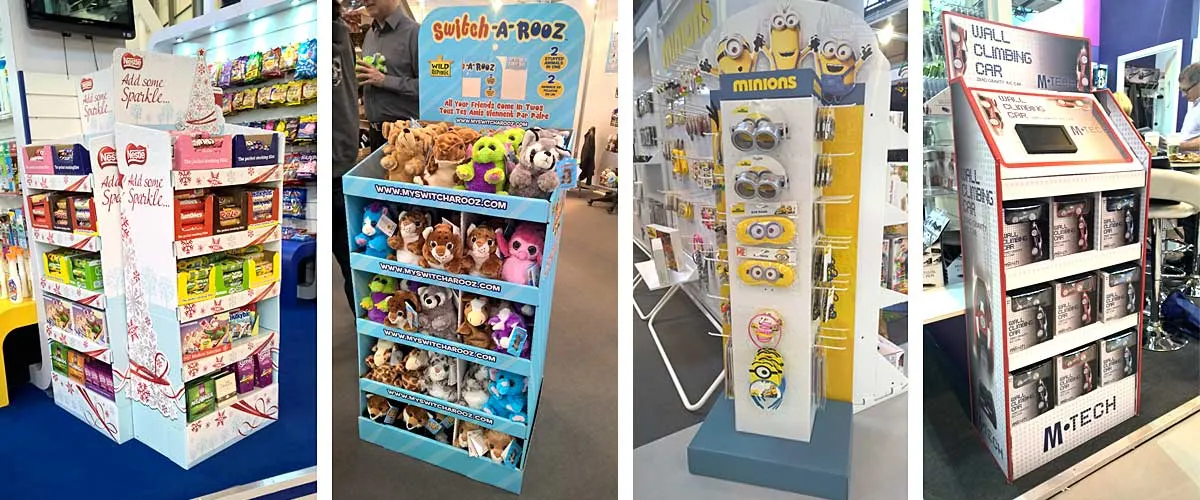
The biggest distinction I make for my clients is between permanent and temporary displays9. Your product and campaign will determine which one you need. One is a long-term piece of the store's furniture; the other is a short-term, high-impact marketing tool. As a designer, this is the first question you must answer, as the materials and construction are completely different.
Permanent Fixtures vs. Temporary Promotions
Permanent fixtures are the backbone of the store layout. They are usually made of metal, wood, or durable plastic and are designed to last for years. Think of the standard aisle shelving, known as gondolas7, or the refrigerated cases.
Temporary displays, which are my specialty, are typically made from cardboard. They are designed for a specific promotion, season, or product launch10 and usually stay on the floor for a few weeks to a few months. They are lightweight, cost-effective, and can be printed with vibrant, eye-catching graphics. This is where FSDUs, dump bins11, and other cardboard creations shine. They are placed in high-traffic areas12 like main aisles or at the end of an aisle (on an end cap) to grab attention and drive sales for a limited time. Understanding this context is key to designing a display that not only looks good but also survives the demands of the retail floor.
How many forms of sales display are there?
Facing a new product launch10, it can feel like there are endless display options. This variety can be overwhelming when you need to make a quick and effective decision for your campaign.
There is no exact number of sales display forms, as most are custom-designed. However, they can be grouped into key categories: by location (floor, counter, shelf), by structure (tiered, dump bin, pallet), or by material (cardboard, acrylic, metal). These categories provide a framework for creativity.

The "unlimited" number of forms is what makes my job exciting. When a client comes to me, they aren't just picking from a catalog. We're creating the perfect solution for their specific product. I remember a client who sold small, high-end cosmetics. A standard dump bin would have cheapened their brand. We designed a small, elegant counter display with individual cutouts for each product. It protected the items and communicated a premium feel. This shows that the "form" must always follow the product's function and brand identity13.
Key Categories of Sales Displays
To simplify the options, I always start by thinking in categories. This helps my clients narrow down their focus and figure out what will work best for their goals.
| Category | Examples | Best For... |
|---|---|---|
| By Location | Floor Displays (FSDUs), Counter Displays (CDUs), Shelf Talkers | Targeting customers in specific zones of the store, from the main aisle to the checkout. |
| By Structure | Tiered/Layered, Dump Bins, Pallet Wraps, Case Stackers | Showcasing different product types, holding specific quantities, or creating a certain shopping experience. |
| By Brand Goal | Launch Displays, Promotional/Sale Displays, Brand Awareness Displays | Achieving a specific marketing objective, whether it's introducing something new or clearing out old stock. |
Instead of getting lost in possibilities, start with these questions: Where will it go? What shape should it be to hold my product? What am I trying to achieve with this campaign? Your answers will point you toward the right form.
What is a floor display?
You need a display that can stand proudly on its own, not get lost on a shelf. Just putting your product cases directly on the floor looks unprofessional and gets ignored by shoppers.
A floor display, also known as a Free Standing Display Unit (FSDU), is a standalone retail fixture made to sit directly on the store floor. It is intentionally separated from permanent shelving to attract maximum attention, promote specific products, and encourage impulse purchases in high-traffic areas12.
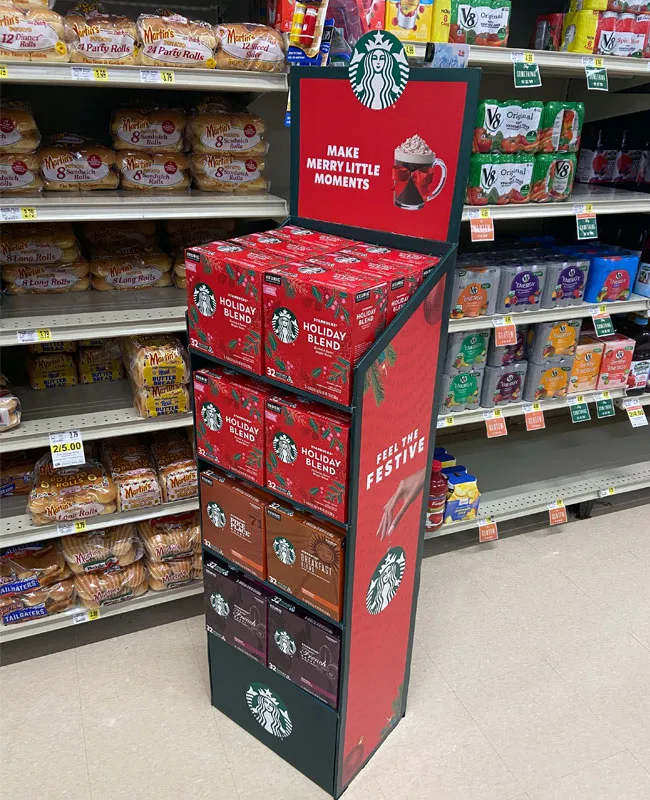
This is the category we started with, and it's one of the most powerful tools in retail marketing. When you have a dedicated floor display, you are creating a "store within a store" for your brand. It's your chance to control the narrative and present your product exactly how you want, without the clutter of competing products on a shelf. After 16 years, I'm still impressed by how a well-designed floor display can dramatically lift sales.
Common Types of Cardboard Floor Displays
To really answer our original question—"What types work best?"—we need to look at the most common forms of cardboard floor displays14. Each one is a tool designed for a specific job.
-
Tiered or Layered Displays: These are probably the most common type I design. They have multiple shelves or tiers, making them perfect for displaying a variety of products, different flavors, or sizes of the same product. They allow for organized, clean presentation and are great for storytelling with graphics that flow from top to bottom.
-
Dump Bins: These are large, open-top bins. They are fantastic for promoting items on sale or for small, irregularly shaped products that are hard to stack neatly. They create a "treasure hunt" feel that encourages shoppers to dig in. They are incredibly cost-effective for moving high volumes of a single product.
-
Pallet Displays: When you need to move serious volume, pallet displays8 are the answer. We design a graphic "skirt" or a structural display that sits on a standard shipping pallet. Often, these arrive at the store pre-loaded with product, making setup instant. They are ideal for bulky items like cases of soda or bags of pet food.
-
Case Stackers: This is the simplest floor display. It's essentially a printed cardboard base that elevates full cases of your product off the floor. It adds branding and a professional touch without complex assembly, perfect for beverage or canned good promotions.
The "best" one depends entirely on your product and your goal. For a new line of gourmet sauces, a tiered display is best. For a Black Friday deal on video games, a dump bin is perfect.
Conclusion
Choosing the right cardboard floor display comes down to your product, brand, and retail goal. The best one is simply the one that gets your product noticed and bought.
-
Get insights into various retail display types and how they can impact customer engagement. ↩ ↩
-
Understand the importance of POP displays in influencing customer buying decisions. ↩
-
Explore the role of POS displays in retail and how they can enhance the checkout experience. ↩
-
Learn how CDUs can effectively showcase products at checkout areas. ↩
-
Learn about visual merchandising strategies that can elevate your retail display effectiveness. ↩
-
Discover the role of permanent fixtures in store layouts and their long-term benefits. ↩
-
Understand the function of gondolas in retail spaces and how they organize products. ↩ ↩
-
Find out how pallet displays can help you move large volumes of products efficiently. ↩ ↩
-
Find out how temporary displays can create impactful marketing opportunities for your products. ↩
-
Find out how to create impactful displays that attract attention during product launches. ↩ ↩
-
Discover how dump bins create a treasure hunt experience that encourages shoppers to engage with your products. ↩
-
Learn how to strategically place displays in high-traffic areas to boost sales. ↩ ↩
-
Explore the connection between brand identity and effective display design. ↩
-
Explore this link to discover effective cardboard floor displays that can enhance your product visibility. ↩



